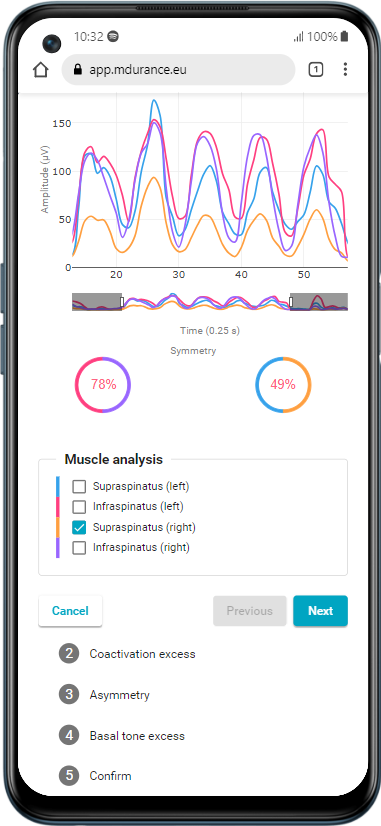

How to Measure it with mDurance
A virtual assistant will guide you to select which muscles you have identified with a deficit or excess coactivation.

Specific Benefits
of measuring deficits and excess activation
What Is Activation Deficit and Excess?
Activation Deficit is a defense mechanism that impairs agonist muscles and/or synergies, leading to strength deficits and/or atrophy.
Coactivation Excess (commonly called muscle compensation) occurs when a muscle is overactivated during a task or movement.
Both phenomena hinder or delay your patients’ recovery.
What It Means if Your Patient Has Deficit or Excess Activation?
Deficit or excess activation relates to functional abnormalities such as:


A virtual assistant will guide you to select which muscles you have identified with a deficit or excess coactivation.
Find out if mDurance is for you
Schedule a free online demo with one of our Electromyography specialists.
Request demo